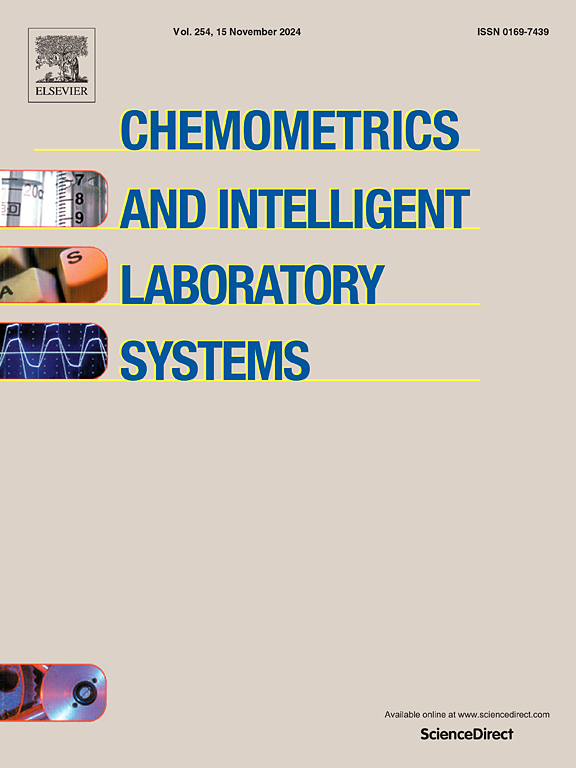色谱分析中分析质量控制方法的最新应用:综述
IF 3.7
2区 化学
Q2 AUTOMATION & CONTROL SYSTEMS
Chemometrics and Intelligent Laboratory Systems
Pub Date : 2024-10-10
DOI:10.1016/j.chemolab.2024.105243
引用次数: 0
摘要
通过设计提高分析质量(AQbD)是一种系统的方法论。在 ICH 提供的总体框架指导下,制药和生物制药行业越来越多地认可并应用 AQbD 概念。建立 AQbD 的目的是确保分析程序在其整个生命周期内都能满足其预期目的,从而形成一种理解透彻、目的明确的方法。它通过建立分析目标轮廓 (ATP)、确定关键方法参数 (CMP) 和选择关键方法属性 (CMA) 来指导分析过程生命周期的每个阶段。通过采用筛选和响应面实验设计,可以精确定位重要因素,并通过统计分析进行优化。这种方法有助于确定设计空间或方法可操作设计区域 (MODR),以确保方法性能的一致性。本综述深入探讨了 AQbD 用于方法开发的基本原理,并介绍了其在 2019-2024 年期间的最新应用,涉及不同样品基质中非合成和合成化合物的色谱分析。事实证明,AQbD 的实施可生成更稳健的色谱方法,提高色谱过程的效率。然而,由于必须全面掌握统计分析和实验设计,再加上缺乏标准化指令或监管先决条件,该方法的采用可能会受到阻碍。本文章由计算机程序翻译,如有差异,请以英文原文为准。
Recent applications of analytical quality-by-design methodology for chromatographic analysis: A review
Analytical Quality-by-Design (AQbD) represents a systematic methodology for method development. The pharmaceutical and biopharmaceutical industries have increasingly recognized and applied AQbD concepts, guided by the overall framework provided by ICH. AQbD is established to ensure that an analytical procedure is fit for its intended purpose throughout its entire lifecycle, leading to a well-understood and purpose-driven method. It guides each stage of the analytical process lifecycle by establishing the Analytical Target Profile (ATP), identifying critical method parameters (CMPs), and selecting critical method attributes (CMAs). By employing screening and response-surface experimental designs, significant factors are pinpointed and optimized through statistical analysis. This methodology aids in defining the design space or Method Operable Design Region (MODR) to ensure consistent method performance. This review delves into the foundational principles of AQbD for method development and presents its latest applications in the period 2019–2024 with reference to chromatographic analysis of both non-synthetic and synthetic compounds in different sample matrices. The implementation of AQbD proved to generate more robust chromatographic methods, enhancing their efficiency in the process. Nevertheless, its adoption can be hindered owing to the necessity for a comprehensive grasp of statistical analysis and experimental design, coupled with the absence of standardized directives or regulatory prerequisites.
求助全文
通过发布文献求助,成功后即可免费获取论文全文。
去求助
来源期刊
CiteScore
7.50
自引率
7.70%
发文量
169
审稿时长
3.4 months
期刊介绍:
Chemometrics and Intelligent Laboratory Systems publishes original research papers, short communications, reviews, tutorials and Original Software Publications reporting on development of novel statistical, mathematical, or computer techniques in Chemistry and related disciplines.
Chemometrics is the chemical discipline that uses mathematical and statistical methods to design or select optimal procedures and experiments, and to provide maximum chemical information by analysing chemical data.
The journal deals with the following topics:
1) Development of new statistical, mathematical and chemometrical methods for Chemistry and related fields (Environmental Chemistry, Biochemistry, Toxicology, System Biology, -Omics, etc.)
2) Novel applications of chemometrics to all branches of Chemistry and related fields (typical domains of interest are: process data analysis, experimental design, data mining, signal processing, supervised modelling, decision making, robust statistics, mixture analysis, multivariate calibration etc.) Routine applications of established chemometrical techniques will not be considered.
3) Development of new software that provides novel tools or truly advances the use of chemometrical methods.
4) Well characterized data sets to test performance for the new methods and software.
The journal complies with International Committee of Medical Journal Editors'' Uniform requirements for manuscripts.

 求助内容:
求助内容: 应助结果提醒方式:
应助结果提醒方式:


